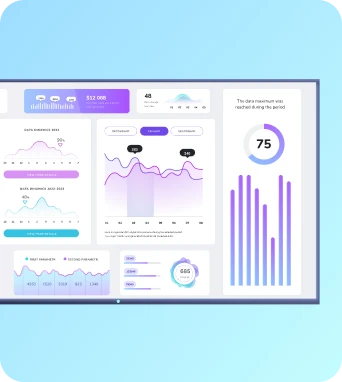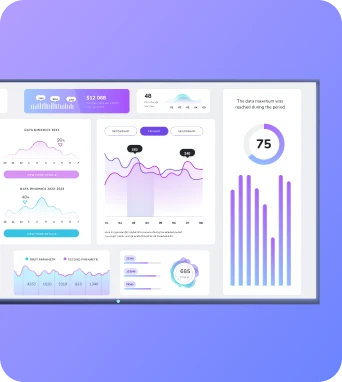Adaptive content rendering
Adaptive content rendering is a technique for digital signage that dynamically modifies media presentation based on screen size, orientation, network bandwidth and contextual signals such as time, location and audience. It ensures legibility, consistent branding and efficient use of resources by choosing appropriate layouts, resolutions, codecs and fallback assets for each display.
Adaptive content rendering
How it works
Adaptive content rendering involves several coordinated steps that transform a single campaign into many device-appropriate presentations. The system first detects display attributes: screen resolution, pixel density, orientation, supported codecs, and available playback memory. It also assesses runtime conditions such as measured bandwidth, latency and recent failure rates. Content metadata and template rules then guide selection: which image size to serve, whether to switch to a lower-bitrate video, which layout variant fits a portrait display, or which localized text block applies to a particular location. Transcoding and asset variants are prepared in advance or on demand; adaptive streaming protocols such as HLS or DASH are used for video where available; for images and layouts the renderer selects the most efficient combination of file type, compression and CSS-like layout rules.
A secondary stage applies business logic and fallbacks. Scheduling and priority rules determine whether a critical alert should interrupt normal playback and which fallback to use if the network is interrupted. Edge caches and CDNs store pre-rendered or pre-transcoded variants close to endpoints to reduce latency and bandwidth usage. Telemetry from players feeds back into the rendering decisions: when a player reports repeated buffering it will be served lower-bitrate assets until conditions improve. This loop of detection, selection, delivery and monitoring is the core of an adaptive rendering pipeline for resilient signage networks.
Implementation best practices
For signage network managers, implementing adaptive rendering begins with inventory and capabilities mapping. Catalogue each endpoint’s screen size, orientation, Android or OS version, playback hardware and typical network path. Define a small set of layout breakpoints and asset variants that cover the majority of devices rather than creating bespoke files for every model. Pre-generate commonly used resolutions and codecs during off-peak hours so the player can quickly switch rather than waiting for live transcoding. Use content templates that separate copy, imagery and layout rules; this makes it easier to swap assets without redesigning the whole frame. Test templates across representative devices and record metrics for load times, bitrate adaptation events and playback errors.
From an operations perspective, prioritise robust fallbacks and clear logging. Configure players to retry gracefully, to use cached content when the network drops, and to surface errors to a central dashboard for rapid diagnosis. Apply bandwidth-aware rules so that large assets are deferred or downgraded on congested connections. Where possible, leverage Fugo.ai features such as remote asset management, centralized templating and telemetry dashboards to automate variant selection and monitor health. Regular audits of asset usage and cache hit rates help refine which variants to keep and which can be retired to save storage and delivery costs.
Troubleshooting and monitoring
Adaptive content rendering reduces manual overhead and improves viewer experience, but it requires structured testing, monitoring and governance. Start with a capability matrix, enforce template standards, pre-generate critical variants and instrument players to report bandwidth, decode errors and cache metrics. Use those telemetry signals to refine rules that decide when to downscale assets, when to switch layouts, or when to fall back to cached content. Keep a small set of high-quality fallbacks for emergency scenarios and document which campaigns can be downgraded without loss of meaning.
For IT admins and signage operators using Fugo.ai, combine automated adaptive rules with periodic manual reviews to ensure brand consistency across variants and locations. If you need assistance defining breakpoints, setting up transcoding pipelines, or configuring player fallbacks, our team can help create a rollout plan that minimises disruption and maximises uptime. Learn more about Adaptive content rendering – schedule a demo at https://calendly.com/fugo/fugo-digital-signage-software-demo or visit https://www.fugo.ai/.
Keep the learning going...
Ad impression tracking
Ad impression tracking records each instance an advertisement is displayed on a screen, capturing time, location, duration and playback status. In digital signage it verifies content delivery, supports billing and campaign analytics, and helps operators measure viewability, compliance and programme effectiveness across networks of TVs and displays.
Adaptive brightness
Adaptive brightness is a display feature that automatically adjusts screen luminance in response to ambient light, content and schedules. On digital signage and TV dashboards it optimises readability, reduces power consumption and helps extend panel lifetime by avoiding excessive brightness while supporting night modes and viewer comfort.
Adaptive streaming
Adaptive streaming is a delivery method that changes video bitrate and resolution in real time to match current network bandwidth and device capability. It divides content into short segments encoded at multiple qualities so players can switch between streams to prevent buffering and keep playback continuous on signage displays.



